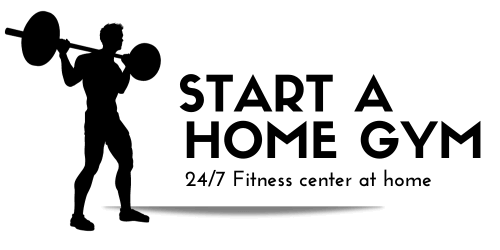Are you ready to create your dream home gym? Before you start shopping for the perfect equipment, it’s important to measure the space where you plan to set up your gym. In this article, you will learn the essential steps on how to accurately measure your space to ensure that your home gym equipment fits perfectly and provides you with a comfortable and functional workout environment. Quit guessing and start measuring, because the perfect home workout space awaits you!

Step 1: Assessing the Available Area
Clear out the space
Before you can start planning your home gym, it’s essential to clear out the space you want to use. Remove any furniture, clutter, or obstacles that may be occupying the area. This will help you get a clearer picture of the available space and make it easier to take measurements.
Take measurements of the room
Once the space is cleared, grab a measuring tape and start measuring the room. Measure the length, width, and height of the room, making note of these dimensions. Make sure to measure from wall to wall, including any indentations or corners that may affect the layout.
Consider the ceiling height
In addition to measuring the floor space, don’t forget to consider the ceiling height. This is especially important if you plan on incorporating equipment such as cable machines or pull-up bars that require extra headroom. Measure the distance from the floor to the ceiling, taking note of any light fixtures or ventilation systems that may affect the available space.
Identify any obstacles or obstructions
While measuring the room, keep an eye out for any potential obstacles or obstructions that may impact the layout of your home gym. This could include things like support beams, columns, or built-in shelves. Take note of their locations and dimensions, as they will need to be accounted for when planning the layout.
Determine the location of windows and doors
Lastly, take note of the location of windows and doors. Consider their swing radius and make sure to leave enough space to comfortably maneuver around them. If possible, measure the distance from the floor to the bottom of windowsills or the top of door frames, as this will help you determine the usable wall space for equipment placement.
Step 2: Determining the Layout
Decide on the gym equipment you want to include
Now that you have a clear understanding of the available space, it’s time to decide on the gym equipment you want to include in your home gym. Think about your fitness goals and exercise preferences to determine the types of equipment that would best suit your needs.
Consider the space requirements for each equipment
Different types of gym equipment require varying amounts of space for safe and comfortable use. Consider the space requirements for each piece of equipment you plan to include. This may involve looking up the dimensions of the equipment or consulting the manufacturer’s specifications.
Visualize the layout on paper or using a virtual planner
To help you visualize the layout of your home gym, consider sketching it out on paper or using a virtual planner. This will give you a better idea of how the equipment will fit within the available space and allow you to experiment with different arrangements.
Factor in the flow and spacing between equipment
When planning the layout, it’s important to consider the flow and spacing between the equipment. Leave enough room for safe and comfortable movement between machines and exercise areas. This will prevent any potential collisions or interference during your workouts.
Ensure accessibility to electrical outlets if required
If you plan on including equipment that requires electricity, such as treadmills or stationary bikes, ensure that there are electrical outlets conveniently located near the designated areas. This will save you from having long extension cords running across the room and posing as potential tripping hazards.

Step 3: Measuring Specific Equipment
Measure the dimensions of larger equipment
For larger pieces of equipment, such as weight racks or multi-gym systems, it’s important to measure their dimensions accurately. This includes measuring the length, width, and height, as well as any additional attachments or extensions that may affect the overall footprint.
Consider the range of motion when using equipment
When placing equipment that requires a specific range of motion, such as rowing machines or ellipticals, consider the space needed for users to move comfortably. Allow for extra clearance around these machines to ensure an optimal exercise experience.
Account for additional space for safety and comfort
It’s always better to err on the side of caution when it comes to space requirements. Account for additional space around equipment for both safety and comfort. This extra space will provide a buffer zone and reduce the risk of accidents or injury during exercise.
Measure the width and length of cardio machines
For cardio machines like treadmills or stationary bikes, it’s crucial to measure both their width and length accurately. This will help you determine the amount of floor space they require and ensure that they fit comfortably within the designated area.
Consider the height and width requirements of weight racks
If you plan on incorporating weight racks or power cages, make sure to measure their height and width. Take into account any additional attachments, such as pull-up bars or dip stations. This will help you determine if the equipment will fit comfortably within the available space.
Step 4: Account for Functional Areas
Allocate space for stretching and warm-up exercises
In addition to the equipment, it’s important to allocate space for stretching and warm-up exercises. This can be as simple as an open area with a mat or designated stretching zones with foam rollers and resistance bands. Consider the dimensions of the area needed for these exercises and factor them into your overall layout.
Include an area for weightlifting or resistance training
If weightlifting or resistance training is part of your fitness routine, make sure to include a dedicated area for these activities. This may involve allocating space for free weights, benches, and other accessories like barbells or dumbbells. Measure the footprint of the equipment and ensure that there is enough room for safe and effective exercise.
Plan for a designated cardio zone
If cardiovascular exercise is an essential part of your workout routine, it’s important to plan for a designated cardio zone. Determine the amount of space needed for the chosen cardio machines and ensure that they are placed in an easily accessible and well-ventilated area.
Consider a space for functional training or bodyweight exercises
Functional training and bodyweight exercises have gained popularity in recent years. If you plan on incorporating these types of exercises into your workouts, allocate a dedicated space for them. This may include areas for exercises like push-ups, lunges, or kettlebell swings. Measure the space required for these activities and plan accordingly.
Designate an area for storage and organizing gym accessories
To keep your home gym tidy and organized, it’s important to designate an area for storage. This can include shelves, cabinets, or storage racks for holding accessories such as resistance bands, yoga mats, or foam rollers. Measure the dimensions of the storage area and ensure that it is easily accessible from various parts of the gym.

Step 5: Evaluating Flooring Options
Measure the dimensions of the gym floor
When it comes to creating a comfortable and safe workout environment, the choice of flooring is crucial. Measure the dimensions of the gym floor accurately, as this will determine the amount of flooring material required for installation.
Evaluate the existing floor’s suitability
Before choosing a specific flooring material, evaluate the existing floor’s suitability for a home gym. Consider factors such as the levelness of the floor, its ability to support heavy equipment, and its resistance to impact and wear. If necessary, consult a professional to assess the condition of the floor and make suitable recommendations.
Consider the impact resistance and shock absorption
When selecting flooring for your home gym, consider its impact resistance and shock absorption properties. This is especially important for activities that involve jumping or high-impact movements. Materials such as rubber or foam provide excellent shock absorption and help minimize the risk of injury.
Explore different flooring materials (e.g., rubber, foam)
There are various flooring materials available for home gyms, each with its own set of advantages and disadvantages. Consider options such as rubber, foam, vinyl, or interlocking tiles. Research the properties of each material, including its durability, maintenance requirements, and installation process, to determine which one best suits your needs and preferences.
Factor in noise reduction and ease of cleaning
In addition to impact resistance, consider the noise reduction and ease of cleaning when choosing a flooring material. Rubber or foam flooring can help reduce noise levels during workouts, while materials like vinyl or interlocking tiles are easier to clean and maintain.
Step 6: Considering the Surroundings
Assess the need for mirrors on the walls
Mirrors can be a useful addition to any home gym. They not only create the illusion of a larger space but also allow you to monitor your form and technique during exercises. Assess whether the inclusion of mirrors on the walls is necessary and consider the dimensions and placement required.
Consider proper ventilation and air circulation
Proper ventilation and air circulation are essential for any home gym. Evaluate the existing ventilation system in the room and determine if additional measures, such as fans or air purifiers, need to be installed. Adequate airflow will ensure a comfortable workout environment and help regulate temperature and humidity levels.
Evaluate the need for soundproofing or noise control
If your home gym is located in close proximity to other living areas or neighbors, soundproofing or noise control measures may be necessary. This can include using sound-absorbing materials or installing acoustic panels to minimize the transmission of noise to adjacent spaces.
Ensure proper lighting for safety and visibility
Good lighting is crucial for creating a safe and inviting home gym environment. Assess the existing lighting situation and consider additional lighting fixtures or natural light sources, such as windows or skylights. Adequate lighting will not only help prevent accidents but also enhance visibility during workouts.
Account for any additional amenities (e.g., TV, sound system)
Lastly, consider any additional amenities you may want to include in your home gym, such as a TV, sound system, or motivational posters. These elements can help create a more enjoyable and motivating workout atmosphere. Take their dimensions into account when planning the layout and ensure they are properly integrated with the overall design.
Step 7: Adhering to Safety Guidelines
Follow manufacturer’s guidelines for equipment clearance
To ensure the safe operation of your gym equipment, it’s important to follow the manufacturer’s guidelines for equipment clearance. This includes leaving sufficient space around the equipment to allow for safe usage and maintenance. Failing to adhere to these guidelines can compromise your safety and the longevity of the equipment.
Ensure sufficient space for emergency exits and pathways
Safety should be a top priority when designing your home gym. Ensure that there is sufficient space for emergency exits and pathways. This includes keeping doorways and walkways clear of any obstacles that may hinder quick and easy access in case of an emergency.
Consider impact zones and buffer areas
Certain exercises or equipment may have impact zones or areas where the equipment or the user can come into contact with walls, columns, or other structures. Take this into consideration when planning the layout and ensure that there is a buffer area to prevent any accidental collisions.
Implement proper electrical safety measures
If your home gym includes electrical equipment, it’s crucial to implement proper electrical safety measures. This includes using surge protectors, grounding equipment, and ensuring that electrical outlets are installed in accordance with electrical codes and regulations. Consult a professional electrician if necessary.
Test and inspect the equipment before use
Before using any gym equipment in your home gym, thoroughly test and inspect it to ensure that it is in proper working condition. Check for any loose or faulty parts, and ensure that all safety features are functioning correctly. This will help prevent accidents and ensure a safe workout environment.
Step 8: Seeking Professional Assistance
Consult a professional contractor or architect
If you’re unsure about any aspect of planning your home gym, don’t hesitate to consult a professional contractor or architect. They can provide expert advice on construction or renovation, help with space planning, and ensure that your home gym meets all safety and building code requirements.
Engage the services of a gym equipment specialist
Gym equipment specialists are well-versed in the unique requirements of home gyms. Engaging their services can provide valuable insight into equipment selection, placement, and functionality. They can also guide you on proper maintenance and usage to optimize the lifespan of your equipment.
Obtain expert advice on load-bearing capacity and structural considerations
To ensure the structural integrity of your home gym, it’s essential to obtain expert advice on load-bearing capacity and structural considerations. This is especially important when installing heavy equipment or making modifications to the existing space. A professional can assess the weight distribution and recommend any necessary reinforcements or modifications.
Consider an interior designer for aesthetically pleasing design
If you want to create a visually appealing home gym that seamlessly integrates with your home’s aesthetic, consider hiring an interior designer. They can help you choose the right colors, materials, and finishes, making your home gym not only functional but also aesthetically pleasing.
Review building codes and regulations
Before embarking on any construction or renovation work, review the local building codes and regulations governing home gyms. Ensure that you comply with all safety standards and obtain any necessary permits or approvals. This will help you avoid any legal issues or potential setbacks during the process.
Step 9: Documenting and Noting Measurements
Record all measurements accurately
Throughout the process of planning and setting up your home gym, it is crucial to record all measurements accurately. This includes the dimensions of the room, equipment, and any other relevant areas. Keeping precise and detailed measurements will assist you in making informed decisions and prevent any errors during the setup process.
Create a floor plan with labeled dimensions
A visual representation of your home gym can be helpful when it comes to planning and organizing the space effectively. Create a floor plan with clearly labeled dimensions to document the layout and ensure that you have a clear understanding of the overall design.
Take photographs or create digital visual references
In addition to a floor plan, consider taking photographs or creating digital visual references of your home gym. This can serve as a handy reference for future modifications or upgrades. Photographs can capture specific angles or details that may not be apparent in a floor plan alone.
Keep a detailed inventory of equipment measurements
As you acquire new equipment, maintain a detailed inventory that includes the measurements of each piece. This will help you keep track of the space requirements and ensure that you are maximizing the use of your available area. Regularly update this inventory as you add or replace equipment.
Regularly update and review the documented measurements
Over time, your home gym may undergo changes or require adjustments. It is important to regularly update and review the documented measurements to ensure that the space remains functional and meets your needs. This will help you identify any potential issues or areas for improvement.
Step 10: Allowing Room for Future Adjustments
Consider the possibility of equipment upgrades or additions
Fitness goals and preferences may change over time, and you might want to upgrade or add new equipment to your home gym. When planning the layout, consider this possibility and leave room for future adjustments. This foresight will save you from having to make significant changes to the overall design later on.
Allow for flexibility in layout and arrangement
Flexibility is key when it comes to designing a home gym that can adapt to your evolving needs. Plan for multiple layout and arrangement options, allowing you to switch things up as needed. Consider movable equipment or modular storage solutions that can easily be rearranged to accommodate different workout styles or preferences.
Plan for potential expansion or modifications
If you have the space and resources, consider planning for potential expansion or modifications in the future. This could involve leaving additional space for new equipment, creating a separate area for specific activities, or even converting an adjacent room into an extension of your home gym. This foresight will provide room for growth and prevent the need for major renovations down the line.
Anticipate changes in fitness goals or training preferences
Fitness goals and training preferences evolve over time, so it’s important to anticipate and plan for these changes. Consider the possibility of incorporating different types of exercises or training methods into your routine. This might involve leaving open spaces for activities like yoga or dance, or having versatile equipment that can support a wide range of workouts.
Ensure the space can accommodate evolving needs
Ultimately, the goal is to create a home gym that can accommodate your evolving needs and lifestyle. Whether it’s adjusting the layout, upgrading equipment, or adding new elements, ensure that the space can adapt to these changes. This will help you maintain your motivation and enjoyment of exercise as you continue to pursue your fitness journey.
By following these ten steps, you’ll be well-prepared to measure the space for your home gym equipment and create a functional and enjoyable workout environment. Remember to assess the available area, determine the layout, measure specific equipment, account for functional areas, evaluate flooring options, consider the surroundings, adhere to safety guidelines, seek professional assistance when needed, document and note measurements, and allow room for future adjustments. With careful planning and attention to detail, you’ll be on your way to building the home gym of your dreams. Happy exercising!


